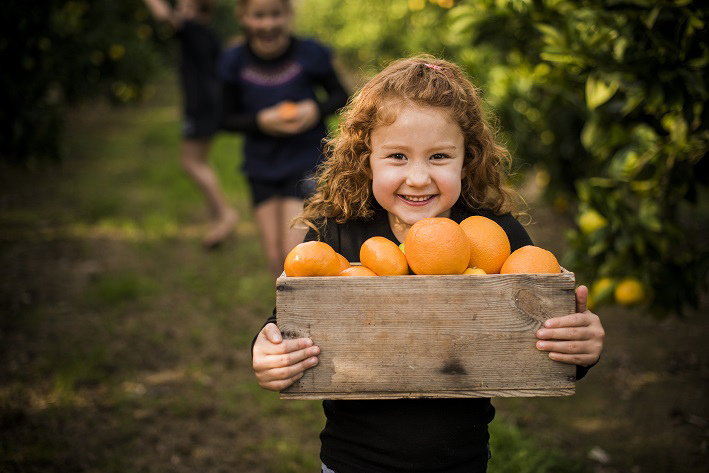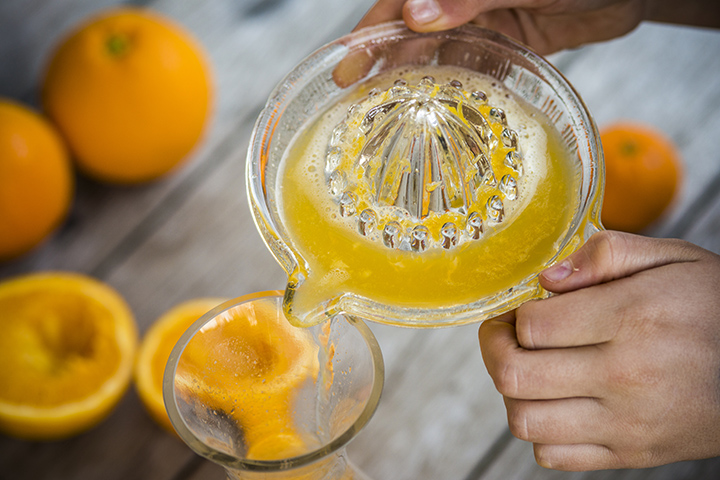Free standard shipping on orders over $98
Free gift with first purchase!
NZ wide delivery
Free standard shipping on orders over $98
Free gift with first purchase!
NZ wide delivery
That’s right, this month is dedicated to an oldie but a goodie, the humble but never overrated orange. A staple of lunchboxes for generations, the orange is a little package of sunshine bursting with Vitamin C and delicious, juicy goodness.
Orange you glad there are delicious oranges in this world?
That’s right, this month is dedicated to an oldie but a goodie, the humble but never overrated orange.
A staple of lunchboxes for generations, the orange is a little package of sunshine bursting with Vitamin C and delicious, juicy goodness.

The Technical Orange Stuff
There are actually two main species of orange. The one we all cultivate and enjoy is the Citrus sinensis, a sweet orange. The other, Citrus aurantium, is bitter.
Sweet oranges fall into four different categories, with over 600 different varieties altogether. There is the common orange, which includes dozens of varieties like the Valencia and Hamlin. Then there is the disturbingly named but delicious blood orange with its deep red flesh. The third type -- the navel orange -- is probably the most well-known and commonly sold. Then there's the acid-less orange - not very common, and lacking in flavour.
Our oranges are delectable Navel oranges sourced from Gisborne. The name comes from the small bellybutton-like bump on the surface, which is actually the remnant of a stunted twin fruit that never fully develops.
Did You Say Juice?
Oranges are synonymous with our favourite juice on the planet.
Although Navel oranges can make a tasty drink when juiced, they are slightly more bitter and less juicy than the blood orange, so might be a bit sour for some drinkers. But the most common juicing orange is actually the Valencia variety.

Growing Conditions
Orange and other citrus trees do well in a subtropical climate with lots of sunshine. They thrive in many areas of New Zealand. One of the most common kinds of trees you will see in a New Zealand backyard is an orange, or other citrus variety.
They do tend to grow slowly, reaching full maturity in 15-20 years, although warmer climates promote faster growth. Thankfully, you don’t have to wait that long for them to produce fruit. That happens in only three to four years.
Interesting Facts:
Interesting fact number one: Which came first, the colour of the fruit? Funnily enough, the fruit! It was named "orange" in the 1300’s, around 200 years before the colour was referred to as such. It is unknown what word they used to refer to the hue before that!
Interesting fact number two: This fact is completely useless unless it happens to come up at your next pub quiz night or you want to write a song about oranges. There is a myth that ‘orange’ is an unrhymable word. But in fact, there are two rhyming words that exist: Blorenge, a mountain in Wales, and sporange, a sac that produces spores!
How Can You Use Them?
So, with oranges in season right now, what else can you do with these beauties while they are in full production? Of course you know you can juice them and scoff them, but you can get a bit more inventive too. There are almost an endless number of household uses for orange peels, which you can find in our blog here. )
When it comes to consumption, you can’t beat a whole fresh orange or a juice. But they are also great in a huge range of foods. Spice up a chocolate brownie with some orange zest, create a great citrusy marinade for your steak or treat yourself to orange-flavoured pancakes by replacing the milk or water with orange juice for a fresh twist on breakfast.
Really, there’s no end to the ways you can use both the fruit and peels of one of the world’s most beloved fruits!
Have we made you hungry for oranges now? Luckily you can order them from our website and they will be on your doorstep within a few short days. Head on over to the store and check them out now.
